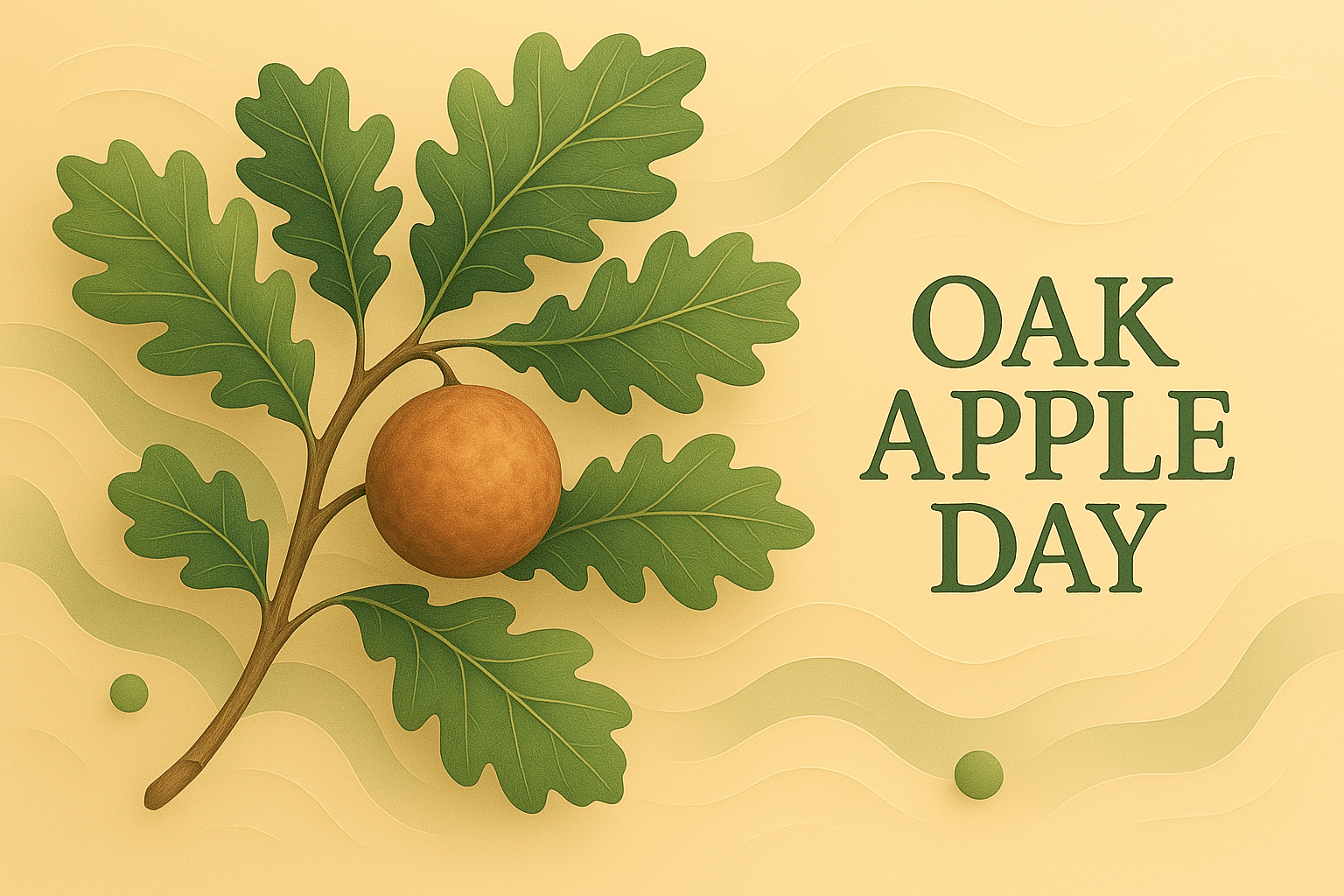What is Oak Apple Day?
Oak Apple Day is celebrated every year on May 29 in the United Kingdom. It marks the restoration of the monarchy in 1660, when King Charles II returned to the throne after years of republican rule. The name comes from the oak tree where Charles is said to have hidden after his defeat at the Battle of Worcester in 1651.
The day is also known as Royal Oak Day or Restoration Day. Traditionally, people wore oak leaves or oak apples to show their loyalty to the crown. Although no longer a public holiday, the date still holds cultural and historical significance in various communities.
History and Origin
After the English Civil War, King Charles I was executed and England became a republic under Oliver Cromwell. His son, Charles II, spent years in exile. On May 29, 1660;his 30th birthday;Charles returned to London as king, ending the Commonwealth and restoring the monarchy.
To celebrate this event, Parliament declared May 29 a national day of thanksgiving. People wore oak leaves to commemorate the king’s escape after the Battle of Worcester, when he famously hid in an oak tree at Boscobel House to avoid capture.
The tradition remained strong for two centuries. Even after the public holiday was cancelled in 1859, many towns and villages kept the custom alive in their own way.
Who Participates in Oak Apple Day?
- Local communities: Celebrate with processions, oak leaf decorations, and reenactments.
- History enthusiasts: Use the day to explore the English Civil War and monarchy restoration.
- Schools and educators: Teach about the fall of the Commonwealth and Charles II’s reign.
- Churches and heritage groups: Hold services and events around royal statues or historical buildings.
- Tourists and visitors: Attend local traditions in towns like Northampton or Fownhope.
Slogans and Themes
Themes include loyalty, restoration, and memory. Common phrases are “Long Live the King,” “The Royal Oak,” and “In Hiding, In Honor.” The oak tree symbolises survival, strength, and the return of order after chaos.
Colors symbols and patterns
Colors
- Dark green: Represents the oak tree and its leaves.
- Royal blue: Connects the day to monarchy and tradition.
- Brown: Symbolises the strength and rootedness of history.
Symbols
- Oak branch: The core symbol of the day, worn or displayed.
- Crown: Signifies royal power and the restored monarchy.
- Tree icon: Often used in posters, banners, and decorations.
Patterns
- Leaf clusters: Used in sashes, pins, or fabric worn during processions.
- Winding vines: Represent historical continuity and nature.
- Historic print motifs: Add a touch of 17th-century style to events and displays.
Most Used Hashtags
- #OakAppleDay
- #RoyalOakDay
- #RestorationDay
- #CharlesII
- #BritishHistory
How to Celebrate Oak Apple Day:
- Wear an oak leaf: Pin a sprig to your shirt as a traditional show of loyalty.
- Visit a local event: Some towns still hold parades, dances, or services.
- Learn the history: Read about Charles II, the English Civil War, and the Restoration.
- Decorate with oak: Add branches or leaves to doorways or community spaces.
- Join a heritage walk: Explore sites linked to the royal escape or restoration story.
Why is Oak Apple Day Important?
Oak Apple Day marks a turning point in British history. It celebrates the return of stability after years of upheaval and honours a monarch who became a symbol of resilience. The oak tree, where Charles II once hid, became a national emblem of strength.
Even without official status, the day lives on in local traditions and personal acts of remembrance. It encourages people to reflect on history, national identity, and the power of symbolic acts to carry meaning across centuries.
Features
May 29: Oak Apple Day (United Kingdom)
Why do you keep falling for the same type?
Read the article Lovemaps: the hidden blueprint of our love.

